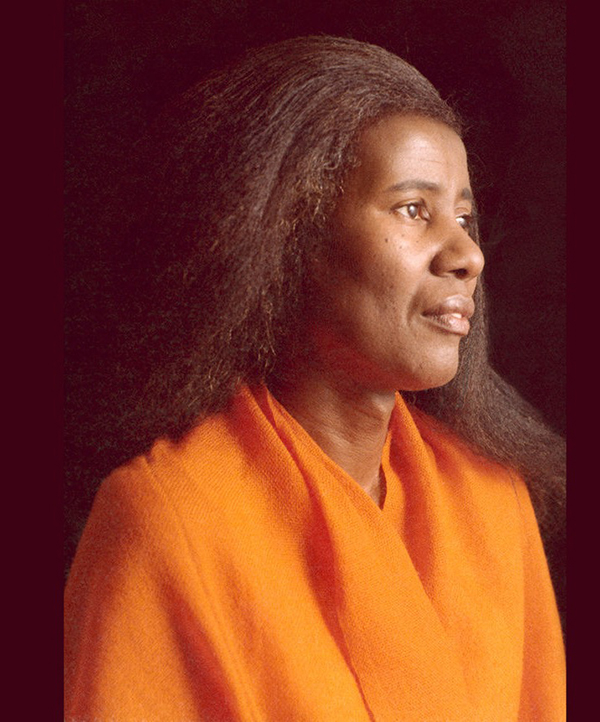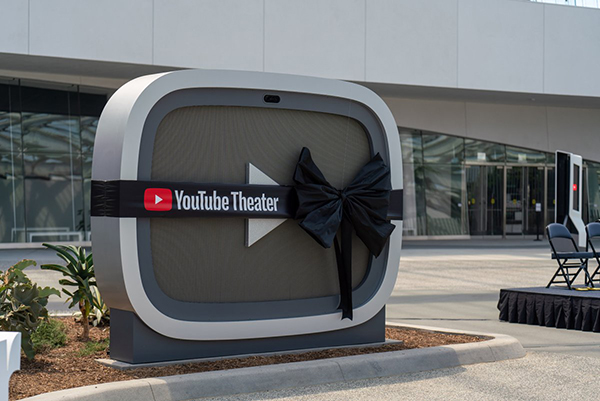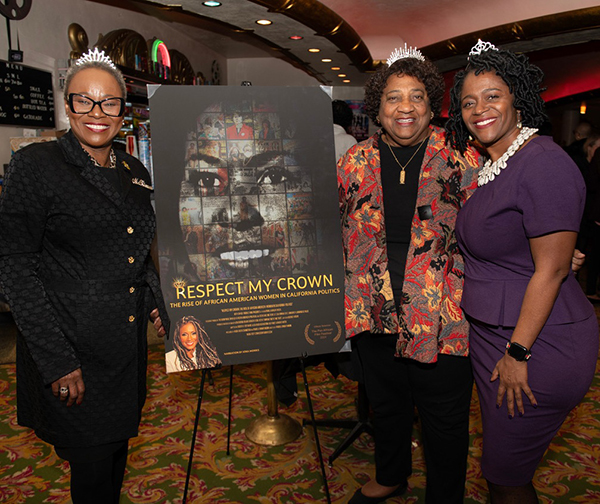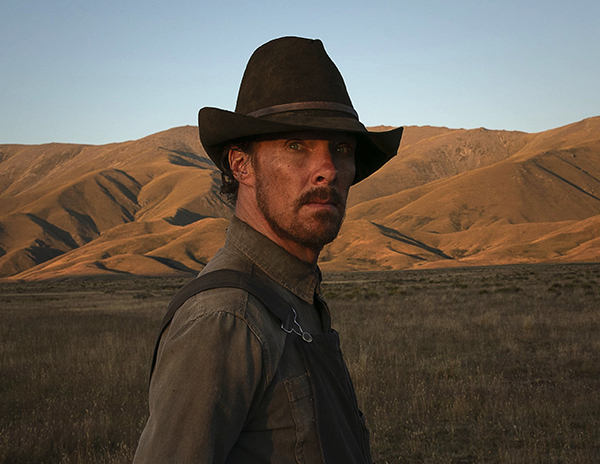Hammer Museum exhibit explores life of Alice Coltrane


Courtesy photo
By Darlene Donloe
Contributing Writer
LOS ANGELES — The “Alice Coltrane, Monument Eternal” exhibit at the Hammer Museum is a wide-ranging tour through the life of the legendary jazz musician and spiritual leader.
The exhibit, which runs through May 4, explores Coltrane’s life, legacy and music through a unique blend of art, archival ephemera and personal artifacts, some of which are being shown for the first time.
The artworks, which include sculptures, paintings, photographs and performances, offer a fresh perspective on Coltrane’s influence and impact on modern art and culture.
It showcases a range of mediums alongside Coltrane’s archival materials, such as handwritten correspondence, unreleased audio recordings, photos and rare video footage.
“Alice Coltrane is known as a singular figure,” said Hammer Museum Director Zoe Ryan. “She’s known as much for her genre-defining musical innovation as she is for her devotional teachings. This exhibition definitely weaves all of these things together.”
Ryan said the exhibition culminates a larger initiative called “The Year of Alice,” which is in partnership with the John & Alice Coltrane Home.
“It included an album, re-issues, events, and tribute concepts around the country and the publication of a devotional text by Alice Coltrane,” Ryan said. “I’m honored that The Hammer can participate in this really exceptional project in this yearlong celebration of Coltrane.”
Several museum activities have been added to celebrate Coltrane. Every Sunday, a concert series will be held inside the Alice Coltrane gallery on a stage designed for the exhibition by artist GeoVanna Gonzalez.
“Alice Coltrane, Monument Eternal” is more than an exhibition, it’s an exploration of Coltrane’s impact through various artistic methods.
The exhibit looks at Coltrane’s experimentation with instruments and sound (Sonic Innovation), the spiritual discovery that followed John Coltrane’s death and the transcendental music that emerged (Spiritual Transcendence), and her attention to form, color and sacred geometry, which is reflected in the design of the artist’s private home and spiritual sanctuary, Sai Anantam Ashram (Architectural Intimacy).
The ashram, set on 48 acres in Agoura Hills, burned in the Woolsey wildfire in 2018 after the property’s sale.
The exhibition’s title comes from Coltrane’s 1977 book, “Monument Eternal,” which reflected her spiritual beliefs, the loss of her husband, jazz saxophonist John Coltrane, and her journey toward healing and self-discovery.
Coltrane, a jazz virtuoso with a unique piano style that blended elements of jazz, classical and gospel music, became an iconic figure in the world of jazz, apart from her late husband, who died in 1967 at 40.
Her music and legacy, which has inspired a new generation of women musicians and composers, embody a powerful feminine and Afro-futurist perspective, challenging traditional notions of jazz and spirituality.
Her compositions, which often reflected her deep interest in Eastern spirituality, philosophy and mysticism, often featured complex harmonies, modal explorations and spiritual themes, expanding the possibilities of jazz and improvisation.
Her albums “Journey in Satchidananda” (1971) and “Ptah, the El Daoud” (1970) incorporated elements of Hinduism, Buddhism and African American spiritual traditions. Her influence extends beyond her impressive discography, inspiring generations of musicians, composers and spiritual seekers.
Coltrane’s collaborations with her husband and other jazz legends helped shape the free jazz and avant-garde movements.
“This exhibition is a celebration of the life and legacy of Alice Coltrane, a musical innovator, a spiritual leader, a mother, a businesswoman,” said the exhibition’s curator, Erin Christovale. “A cultural figure who has left such a presence in the zeitgeist. Alice’s lifelong project was marrying the sonic realm and the spiritual realm. It’s a beautiful time to celebrate her.”
Over two years, Christovale, a curator at the Hammer Museum, said she researched Coltrane extensively to curate the show.
“In many ways, I feel like I’ve been working on this show my whole life,” said Christovale, who, with Amir George, co-founded Black Radical Imagination, an experimental film program. “I grew up in a jazz household. I started having conversations with the family a few years ago, which naturally built into this.”
Christovale, a curator who focuses on film and video within the African Diaspora, said the challenge with putting together a show of this magnitude was ensuring she gave Coltrane her due.
“This is a show about someone’s legacy and someone who has passed, and I wanted to ensure that I felt good about every step that I took in respecting her and honoring her the best way that I could,” said Christovale, who is a fan of Coltrane’s music, which she calls “healing.” “Her music is like sonic therapy. Her music makes everyone feel better. With this exhibit, I hope that I did her proud.”
The innovative, interdisciplinary exhibit is divided into three thematic sections: Sonic Innovation (Coltrane’s musical legacy), Spiritual Transcendence (Coltrane’s spiritual arc — coming into being a guru), and Architectural Intimacy (speaks to Coltrane as a world builder) and as someone who decided to liberate herself).
These sections examine Coltrane’s groundbreaking music, spiritual journey, and meticulous attention to detail in her personal and artistic life.
One of the exhibit’s highlights is the showcase of works by 19 contemporary Black American artists, including Rashid Johnson, Cauleen Smith, Ephraim Asili, Bethany Collins, Jamal Cyrus, Steven Ellison, Star Feliz, Nikita Gale, Geovanna Gonzalez, Leslie Hewitt, Jennie C. Jones, Jasper Marsalis, Devin T. Mays, Nicole Miller, Shala Miller, Gozie Ojini, Adee Roberson, Martine Syms, and Sune Woods, all inspired by Coltrane’s legacy.
Over the years, Alice Coltrane, who died in 2007 at age 69, was known by different names, which held different meanings for various communities.
To musicians, she was Alice Coltrane, the Detroit-raised pianist who joined John Coltrane’s band. To spiritual seekers, she was Turiyasangitananda, or Turiya, a female religious teacher who founded an ashram near Los Angeles where devotional music laced with Sanskrit mantras was central to community life.
Curator Christovale, with the curatorial assistant Nyah Ginwright, organized the exhibit, which was made possible with the support of the Coltrane family (Michelle, Ravi and Oranyan).
The Hammer Museum is located at 10899 Wilshire Blvd. Hours are 11 a.m. to 6 p.m. Tuesday through Thursday, 11 a.m. to 8 p.m. Friday, and 11 a.m. to 6 p.m. Saturday and Sunday.
Admission is free. Information: 310 443-7000.
Darlene Donloe is a freelance reporter for Wave Newspapers who covers South Los Angeles. She can be reached at ddonloe@gmail.com.





